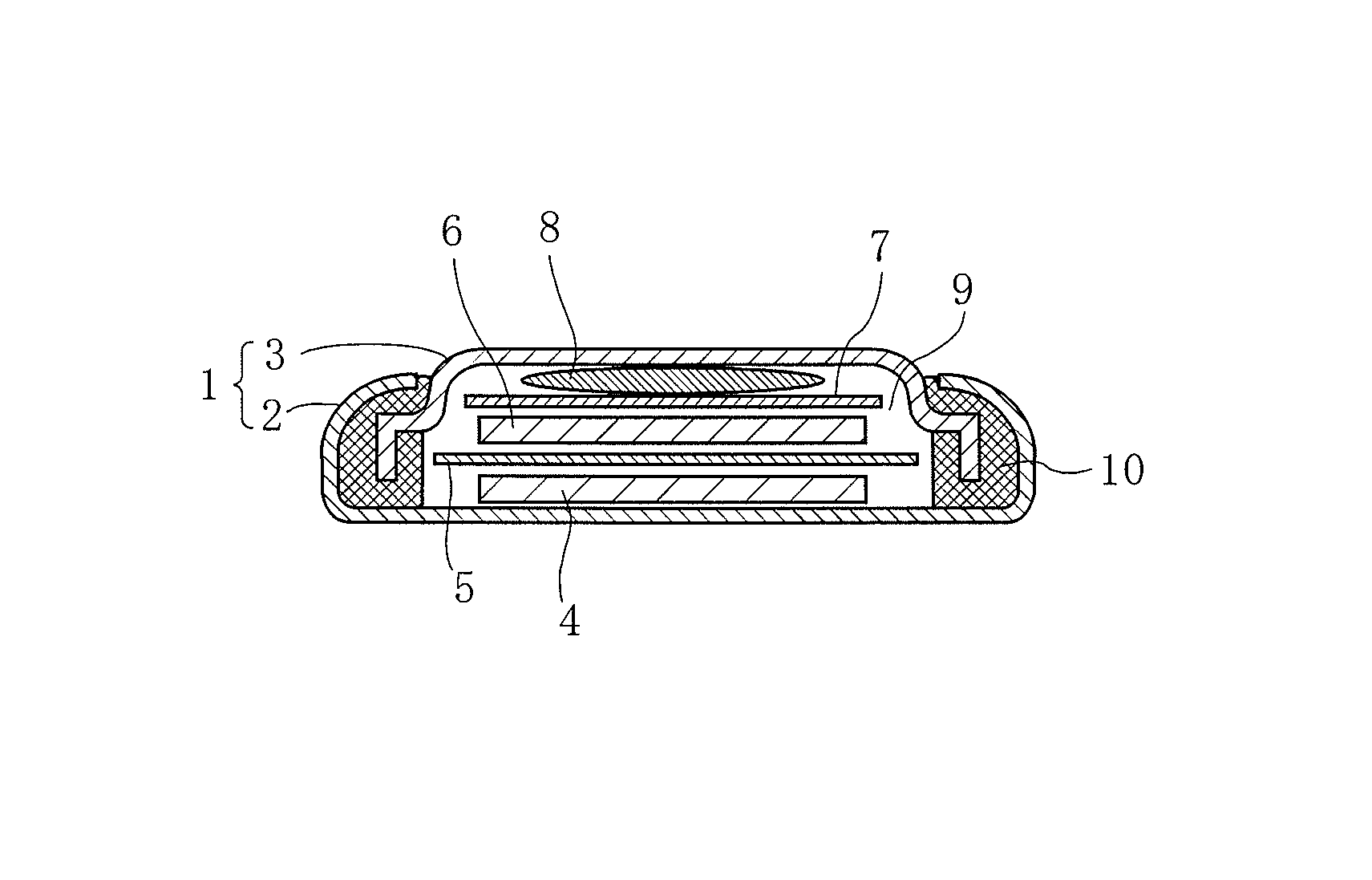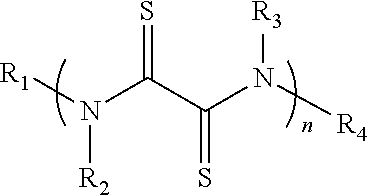Electrode active material , electrode and secondary battery
- Summary
- Abstract
- Description
- Claims
- Application Information
AI Technical Summary
Benefits of technology
Problems solved by technology
Method used
Image
Examples
example 1
Preparation of Secondary Battery
[0094]A rubeanic acid indicated by the chemical formula (1a) was prepared.
[0095]Then, 100 mg of the rubeanic acid and 0.2 mg of cyanomethanesulfonylamide were mixed to prepare a mixture for an active material (the content of the cyanomethanesulfonylamide: 0.2% by mass).
[0096]Subsequently, 800 mg of graphite powder as a conductive aid, and 200 mg of polytetrafluoroethylene as a binder were respectively weighed, and these weighed materials and the above-mentioned mixture (100.2 mg) for an active material were kneaded while being uniformly mixed, and thereafter the resulting mixture was pressure-formed to obtain a sheet-like member having a thickness of about 150 μm. Thereafter, the sheet-like member was dried at 70° C. for 1 hour in vacuum, and then punched out into a round shape with a diameter of 12 mm to prepare a positive electrode containing the mixture for an active material. Next, the positive electrode was impregnated with an electrolytic soluti...
example 2
Preparation of Secondary Battery
[0102]A coin battery was prepared in the same manner as in Example 1 except for using, as the electrolytic solution, which used an ionic liquid including 1-ethyl-3-methylimidazolium bis(trifluorosulfonyl)imide as an electrolyte and contains LiN(CF3SO2)2 (electrolyte salt) having a mole concentration of 1M, in place of the mixed solution of methyltetraglyme and LiN(CF3SO2)2.
[0103]Check of Operation of Secondary Battery
[0104]The above-mentioned coin battery was charged at a constant current of 0.1 mA until a voltage reached 4.2 V, and thereafter, was discharged at a constant current of 0.1 mA until a voltage reached 1.5 V. Consequently, the battery was verified to be a secondary battery having a discharge capacity of 0.48 mAh, which had a plateau at a charge-discharge voltage of 2.1 V.
[0105]A capacity density per mass of the active material, calculated from the discharge capacity, was 640 Ah / kg, and the compound was verified to be an electrode active ma...
example 3
Preparation of Secondary Battery
[0107]N,N′-Dimethyl dithiooxamide indicated by the chemical formula (1b) was prepared.
[0108]A coin battery was prepared in the same manner as in Example 1 except for using N,N′-dimethyl dithiooxamide in place of the rubeanic acid in Example 1.
[0109]Check of Operation of Secondary Battery
[0110]The above-mentioned coin battery was charged at a constant current of 0.1 mA until a voltage reached 4.2 V, and thereafter, was discharged at a constant current of 0.1 mA until a voltage reached 1.5 V. Consequently, the battery was verified to be a secondary battery having a discharge capacity of 0.31 mAh, which had a plateau at a charge-discharge voltage of 2.2 V.
[0111]A capacity density per mass of the active material, calculated from the discharge capacity, was 400 Ah / kg, and the compound was verified to be an electrode active material with high capacity density which is suitable for a high energy density battery.
[0112]Thereafter, a cycle of charge and dischar...
PUM
 Login to View More
Login to View More Abstract
Description
Claims
Application Information
 Login to View More
Login to View More - R&D
- Intellectual Property
- Life Sciences
- Materials
- Tech Scout
- Unparalleled Data Quality
- Higher Quality Content
- 60% Fewer Hallucinations
Browse by: Latest US Patents, China's latest patents, Technical Efficacy Thesaurus, Application Domain, Technology Topic, Popular Technical Reports.
© 2025 PatSnap. All rights reserved.Legal|Privacy policy|Modern Slavery Act Transparency Statement|Sitemap|About US| Contact US: help@patsnap.com



